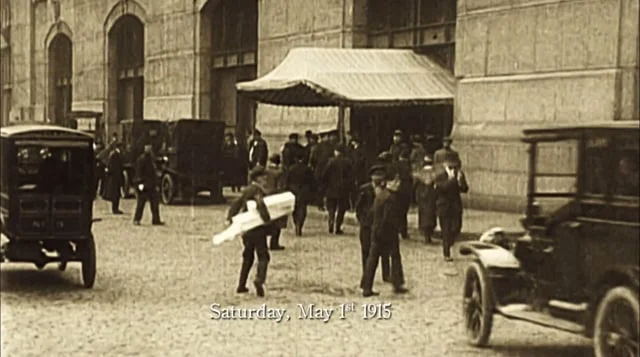- Military Myths, Mysteries, Legends & Curiosities
- The Secret Cargo of the RMS Lusitania (7th May 1915)
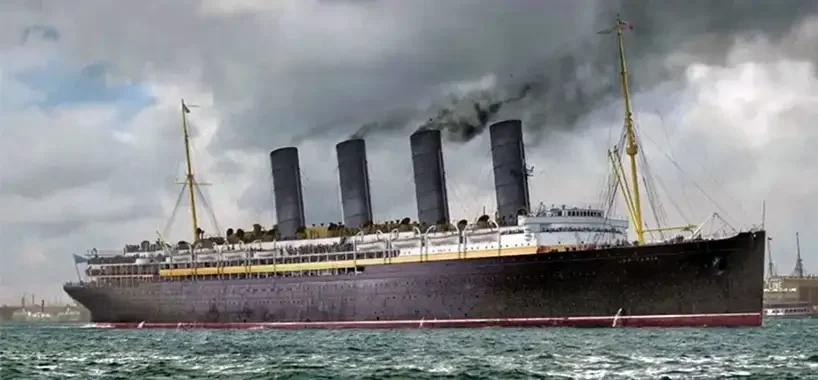
The Secret Cargo of the RMS Lusitania (7th May 1915) Did the British intentionally expose Lusitania to danger?
The story of the short life and premature death of the majestic Lusitania is one of the most dramatic, tragic, and enduringly controversial tales in maritime history. At sea, the war had started with a burst of activity. German warships in distant lands had preyed on Allied merchant ships for months but had eventually either been hunted down or simply run out of coal.
Index of Content
Discussing the ill-fated liner's military significance may appear pointless at first. Although the ship was designed to be the most advanced naval support vessel and the leading transatlantic passenger steamship of its time, its military operations lasted only a brief period, had minimal influence on the ongoing conflict, and were abruptly ended by a single torpedo.
The way in which Lusitania met her end is what makes her story militarily significant. While she was not the first express liner to be lost during wartime, her demise held significant and lasting significance. The sinking of the Lusitania had a profound impact by eliminating the remaining Edwardian arrogance, boosting the Allied war effort, shifting global opinion against Germany, and making the ship a symbol of the severe consequences of military mistakes and the harsh reality of modern warfare.
Construction of Lusitania and her Sisterships
The liner that played a crucial role in World War I was created as a result of the same political and commercial forces that later contributed to the outbreak of the conflict. Lusitania was conceived in the early 1900s as the first of two superliners aimed at restoring Britain's control of the North Atlantic passenger trade. Germany's Norddeutscher Lloyd and Hamburg-Amerika lines, along with U.S. financier J. Pierpont Morgan's International Mercantile Marine (IMM) shipping conglomerate, have recently challenged the dominance in the shipping industry.
The British government was particularly interested in Morgan's firm because, from 1901 to 1902, IMM purchased four British shipping companies, including the famous White Star Line. The acquisition of these companies by the U.S. company not only decreased Britain's profits from transatlantic trade but also lowered the number of merchant vessels accessible to the Royal Navy during wartime. The British government responded straightforwardly to the German maritime expansion and the significant threat posed by the growth of IMM. The Admiralty suggested to Parliament that the British government financially support the building and running of two new "superliners." With these ships, Britain could regain its lead in the transatlantic passenger trade, weaken the position of Morgan and his IMM, and provide the Royal Navy with the newest and fastest auxiliary ships available.
The admiralty's proposal greatly benefited the Cunard Line. Cunard, the only independent premier transatlantic passenger steamship company in Britain, was facing tough competition from its rivals. To survive, the firm needed to significantly boost its market share in the North Atlantic trade and obtain long-term financial support to upgrade its fleet and counter IMM's progress. Cunard had secretly lobbied for the subsidy proposed by the Admiralty and consequently welcomed the government's approach. Cunard considered obtaining the subsidies to be extremely important, so the company agreed to the government's strict conditions regarding the design, operation, and wartime use of the new liners. Furthermore, multiple members of Cunard's board of directors believed that constructing the ships according to naval standards would provide the liners with an unparalleled level of structural resilience and water resistance, qualities equally important for a transatlantic passenger vessel as they are for a military ship.
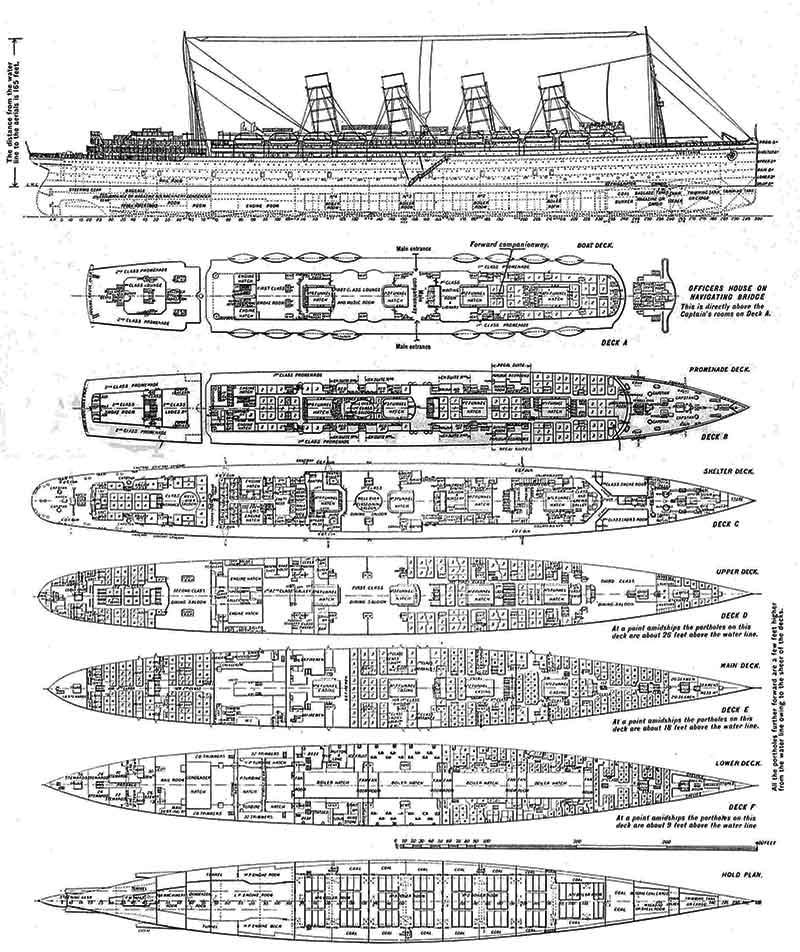
The Admiralty's design criteria were comprehensive. Each liner's steam plant, engines, and steering gear were positioned below the waterline to shield them from direct and downward gunfire, in addition to the extensive watertight separation. Each ship would have watertight compartments on both sides to store coal for transatlantic voyages, as well as to increase stability and enhance protection against mines and torpedoes. Each ship would be equipped with ten 4-inch guns for wartime, which would be kept on land and then mounted on strengthened deck sections when required. The new liners were required to maintain a fair-weather speed of 24.5 knots.
The subsidy agreement signed in July 1903 outlined that the British government would financially support the construction of two new liners, with a maximum cost of £2.6 million. Additionally, the government would cover annual operating expenses of up to £75,000 per vessel and provide Cunard with yearly contracts to transport the Royal Mail. The shipping line agreed to comply with to the Admiralty's design and construction standards, allocate a portion of each ship's crew from the Royal Naval Reserve, and transfer the ships to the Royal Navy promptly at the start of any conflict.
Detailed design work commenced after the formalities were finished. Leonard Peskett, the chief designer at Cunard, aimed to accommodate the ships' different commercial and military purposes by constructing passenger liner superstructures on a warship's hull. The new ships, with waterline lengths of 232 meters (762 feet) and weighing 31,000 tons each, will feature partial double hulls, transverse interior bulkheads, and longitudinal watertight compartments covering two-thirds of each ship's length for protection. Watertight doors in the transverse bulkheads could be automatically closed from the bridge. Key areas of each vessel's main deck were reinforced with additional plating to withstand gunfire.
The propulsion systems of the new liners were designed based on the turbine engines that had demonstrated their effectiveness on Carmania. Each ship will be equipped with four turbines powering quadruple screws, along with 25 boilers generating steam. Four sets of boilers were arranged, with coal being shoveled into each boiler through watertight doors from the lateral compartments. The design team had to place the passenger accommodations above deck since the hull was mostly dedicated to machinery in each new ship. The accommodations were distributed across six decks, providing room for 560 First Class, 460 Second Class, and 1,138 Third Class passengers. Every ship had dining rooms, public areas, and amenities typical of top transatlantic liners, along with less glamorous storerooms, service areas, and work spaces essential for a grand seagoing hotel.
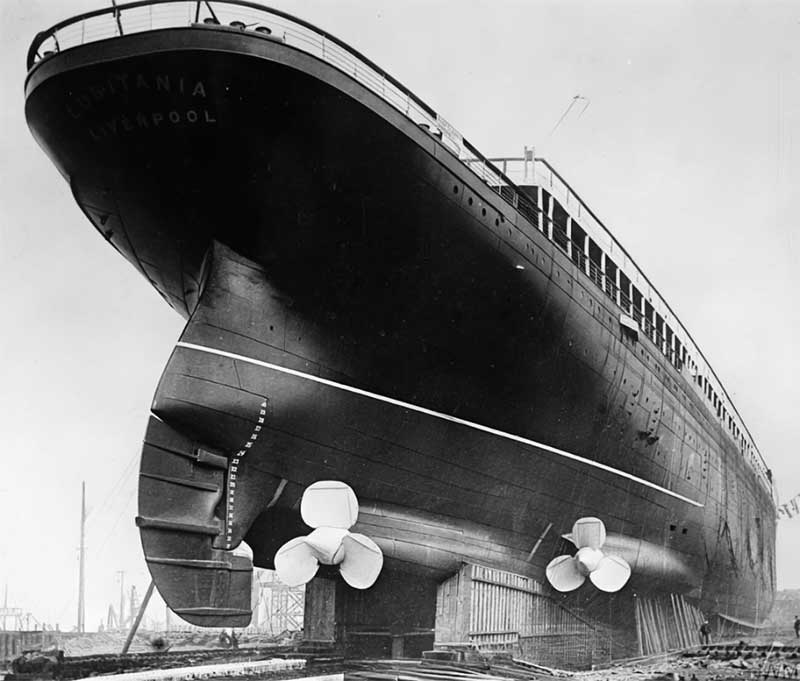
Cunard approved the design of the two new liners without significant changes and, in early 1905, gave permission for the contracts to be signed for their construction. John Brown and Company in Clydebank, Scotland, was awarded the construction of the first ship, Lusitania, while Swan Hunter & Whigham Richardson in Wallsend-on-Tyne was awarded the second ship, Mauretania. The keel of the Lusitania was laid in February 1905, followed by the Mauretania a few months later. The construction of the new superliners proceeded without any issues, and Lusitania was launched at Clydebank on June 7, 1906. Her sister ship was launched three months later. Over the following year, both ships were developed from empty structures into the most extensive, cutting-edge, and luxurious passenger steamers the world had ever witnessed. The vessels were remarkable, featuring four stylish funnels and Cunard's unique colors that created a sense of both speed and elegance. Each included top-notch accommodations and furnishings, projecting an air of greatness and style without the excessive luxury seen in the leading German liners of that time.
Lusitania heads for her First Voyage
Speed was crucial, and both ships were proven to be fast ocean vessels. Lusitania maintained a speed of over 25 knots during her sea trials in July 1907, while Mauretania achieved slightly higher speed during her trials in November of the same year. The Blue Riband, a traditional streamer indicating the ship with the fastest transatlantic crossing time between two specific points, was not achieved by Lusitania on her first voyage to New York in September 1907. However, she successfully claimed it the following month during her second crossing in the east-bound direction.
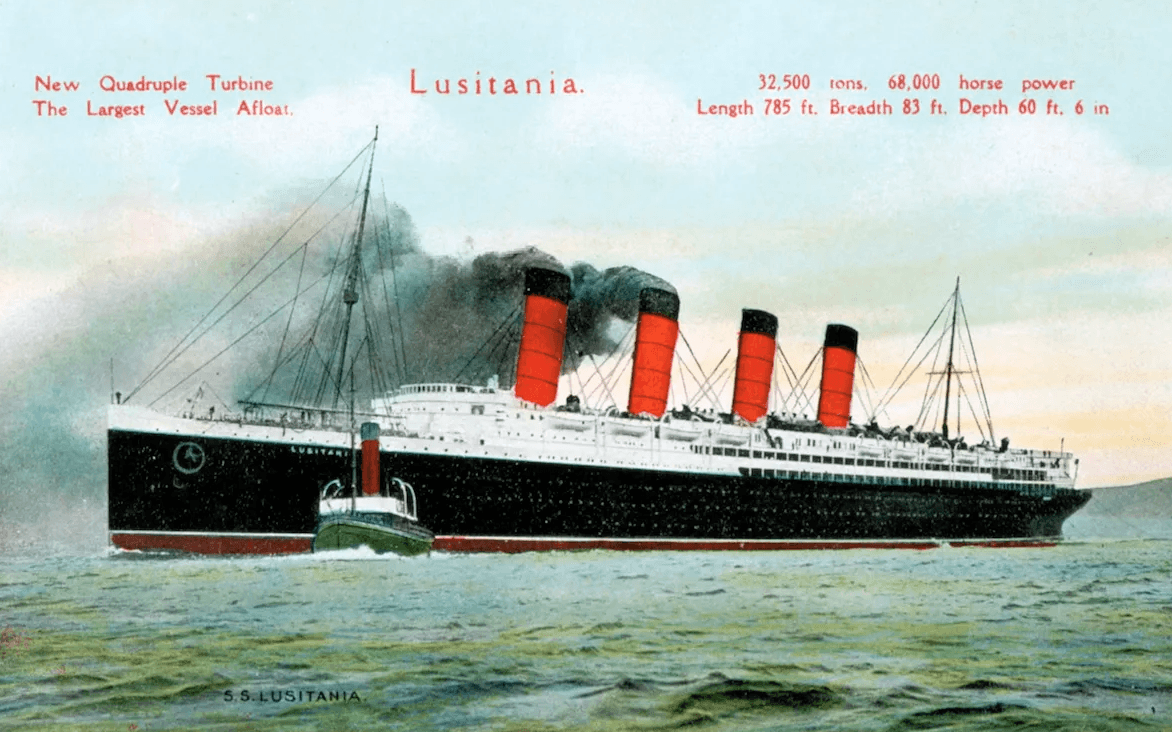
During the following years, the two ocean liners engaged in a cordial competition on the North Atlantic, exchanging the Blue Riband multiple times. Cunard's liners' consistent transatlantic service helped the company regain prominence in the industry, reducing competition from IMM and other national shipping companies. In 1910, Cunard's business was thriving, leading them to commission a third superliner, Aquitania, from John Brown. The ship was added to the company's fleet in May 1914.
War in Europe
In 1914, the European War broke out, leading to tragic consequences for Lusitania. The liner was in New York getting ready for an evening departure to Liverpool when hostilities began on August 4. Captain Daniel Dow, the ship's master, was told to postpone his departure until the early hours of August 5 and then discreetly head for the open sea. The HMS Essex cruiser joined the Lusitania after it departed at 1 a.m., a move that went unnoticed. The liner and her escort headed north towards Newfoundland and quickly vanished.
The residents of Liverpool were surprised and relieved to see the liner as it sailed up the Mersey River on the night of August 14. The ship depended on its speed for protection during the transatlantic journey. Many of the 200 passengers praised Dow and his crew for their skill and courage in safely bringing the liner back. After ensuring the safety of the Lusitania, the Royal Navy and Cunard discussed the liner's contribution to the country's war efforts. She and her two sister ships were designed as auxiliary cruisers, and the Aquitania was already being converted for this purpose. In May 1913, the Lusitania was taken out of service for eight weeks and placed in dry dock in Liverpool to improve its military capabilities.
The work involved adding extra plating to specific areas of the ship's upper decks and installing mounting rings for guns on the forecastle, afterdeck, and shelter deck, as documented in Cunard records. The conversion process involved transforming a coal bunker and one of her mailrooms into magazines. No firearms were placed on board, and the gun mounts were seemingly concealed and shielded by deck sections, as there were no visible indications of them when the ship resumed operations in July 1913. Despite being prepared, there were other missions that Lusitania and Mauretania were well-suited for, which could potentially keep them safe until Aquitania's effectiveness as an armed merchant cruiser could be assessed. Ultimately, both ships were designated to transport the numerous neutral Americans stranded in Europe due to the war's commencement.
The "The Great Lusitania Debate" commences at this juncture, prompting the unresolvable query of whether the Lusitania was a warship or a passenger liner when it sank.
Multiple sources claim that the ship was equipped as an auxiliary cruiser before setting sail for New York on its initial repatriation journey. The liner was equipped with multiple 6-inch guns, the passenger sleeping compartments on "F" Deck were repurposed for cargo or troop use, and a significant portion of the shelter deck was enclosed, likely for storing cargo. While it was possible and understandable to convert, there is little evidence to support that such work was actually done. Furthermore, there were no guns visible when the ship arrived in New York after its first repatriation voyage, and there is no reliable evidence indicating that any informed observer noticed the modifications made to the ship's passenger areas or shelter deck. Lastly, Aquitania's inadequate performance as an armed merchant cruiser should be noted. She served in the position for only 17 days before crashing into a merchant ship and being promptly removed from military service. This incident demonstrated that Cunard's superliners were unsuitable for use as auxiliary cruisers.
The Lusitania, which sailed monthly between Liverpool and New York during the fall and winter of 1914, did not display any apparent signs of being "militarized." She underwent regular U.S. official board inspections. If any clear signs of weapons or cargo prohibited by the neutral U.S. government were found, the liner would have been immediately classified as a military vessel. The absence of any mention of such classification implies that, regardless of whether the Lusitania was covertly transporting munitions or other prohibited goods, its main purpose was to transport passengers. By spring 1915, Atlantic crossings on the Lusitania had become nearly ordinary. The common belief that the ship's high speed or its role as a passenger vessel made it invulnerable to attack led both the public and some Cunard Line staff to underestimate the dangers faced by the Lusitania. Despite the German government's public announcements of its intention to attack enemy vessels in the war zone near the British Isles, German submarines were causing significant damage to merchant shipping.
On February 4, the German Navy issued the following statement, which was sent for publication in all neutral states:
"(1) The waters around Great Britain and Ireland, including the whole of the English Channel, are hereby declared to be a war zone. From February 18 onwards, every enemy merchant vessel encountered in this zone will be destroyed, nor will it always be possible to avert the danger thereby threatened to the crew and passengers."
"(2) Neutral vessels also will run a risk in the War Zone, because in view of the hazards of sea warfare and the British authorization of January 31 of the misuse of neutral flags, it may not always be possible to prevent attacks on enemy ships from harming neutral ships."
The statement was accompanied by a map for mariners showing the area that the Germans were declaring to be a war zone.
The prevalent belief in Lusitania's perceived invincibility was strongly demonstrated on May 1, 1915, the day of her final departure from New York. Only a small number of passengers who were getting on the ship at Pier 54 had noticed a German advertisement that had been published in various prominent newspapers earlier that day. The notice, placed by the German Embassy in America alongside Cunard's sailing timetables, warned travelers about the ongoing war between Germany and Great Britain. It stated:
Attention! Travelers planning to sail across the Atlantic Ocean should be aware that a state of war exists between Germany and Great Britain. The war zone includes the waters near the British Isles. In accordance to an official warning from the Imperial German Government, ships displaying the flag of Great Britain or any of its allies may be attacked in these waters. Passengers traveling within the war zone on British or allied ships do so at their own risk. Imperial German Embassy, Washington, D.C. April 22, 1915
While some passengers canceled their bookings, the majority viewed the threat of attack as merely a German ploy to deter customers. The liner's passenger list was the fullest and most diverse since the outbreak of war. Out of the 1,257 individuals on board heading to Liverpool, 950 had Australian, British, Canadian, or Irish passports; 189 were Americans; 71 were Russians; and there were small numbers of travelers from 14 other countries. The liner's passenger list specifically indicated that there were 129 children on board, ranging from infants to adolescents.
On the Lusitania that Saturday morning, there was a diverse range of cargo destined for Britain. The shipment contained a significant quantity of items that were already highly sought after in wartime England, such as lard, butter, beef and pork, oysters in barrels, cheese in crates, fur in bales, camping equipment in crates, canned goods in boxes, and various miscellaneous items. Some of the ship's cargo was not ordinary. The New York Collector of Customs received clearance manifests detailing 4,200 cases of .303-caliber rifle cartridges, over 1,200 crates of empty casings for shrapnel and artillery shells, 189 cases of non-ordnance military equipment, and 18 cases of empty artillery shell fuses. Although clearly military in nature, these items were not categorized as prohibited munitions by U.S. Customs authorities, and their shipment did not breach U.S. neutrality.
Transporting these clearly militaristic items is another crucial element of the Great Lusitania Debate. Several authors have argued that the "ammunition" listed on the cargo manifest should have been labeled "munitions" instead. They refer to Cunard records and newly discovered documents after the ship sank, which suggest that the supposedly empty shrapnel shells were actually filled, the items listed as cheese and food were actually explosives, and the liner may have been carrying enough illegal war supplies to justify being detained under U.S. neutrality laws and targeted by the Germans. It is important to note that it cannot be definitively stated whether the Lusitania was transporting explosives in addition to those documented on its manifests. The documents suggesting that she was being used to transport large quantities of munitions and other war materials are unverifiable, despite being compelling. All the individuals on the ship that could have assisted in solving the mystery have passed away. We will never definitively know.
We are much more confident about the events that caused the Lusitania's sinking.
The Day of the Tragedy
The liner departed at 10:30 a.m. on May 1 after loading passengers, coal, cargo, fresh water, and food. After disembarking the pilot at Sandy Hook, the ship briefly stopped just beyond the U.S. territorial boundary to offload some passengers suspected to be German sympathizers and to collect mail from the liner Carmania. The Carmania, along with HMS Essex and HMS Bristol, were patrolling the New York area in search of German ships. Captain William Turner completed the rendezvous and set a course for Ireland, instructing the liner's engines to operate at full speed. Cunard had deactivated six boilers to conserve coal, causing Lusitania to only achieve a top speed of 20 knots, significantly lower than her usual maximum speed of 25 knots.
The liner's journey to Britain was largely uneventful. The passengers engaged in typical activities such as dining, socializing, and observing the sea, despite frequent discussions about German submarines and the potential for an attack. Turner appeared unperturbed by potential threats directed at the passengers. Turner appeared calm, but he was actually very anxious about the potential of an attack on Lusitania. Before departing New York, he was informed about the German naval positions. Throughout the journey, he received multiple messages regarding the potential locations of U-boats that could pose a threat to his ship. The ship's route would lead her around southern Ireland, passing Queenstown to rendezvous with the escorting cruiser HMS Juno, then proceeding through the St. George's Channel and into Liverpool. Turner was aware of U-boats operating in the area he was traveling through, but he was unable to significantly change his route without explicit guidance from the Admiralty.
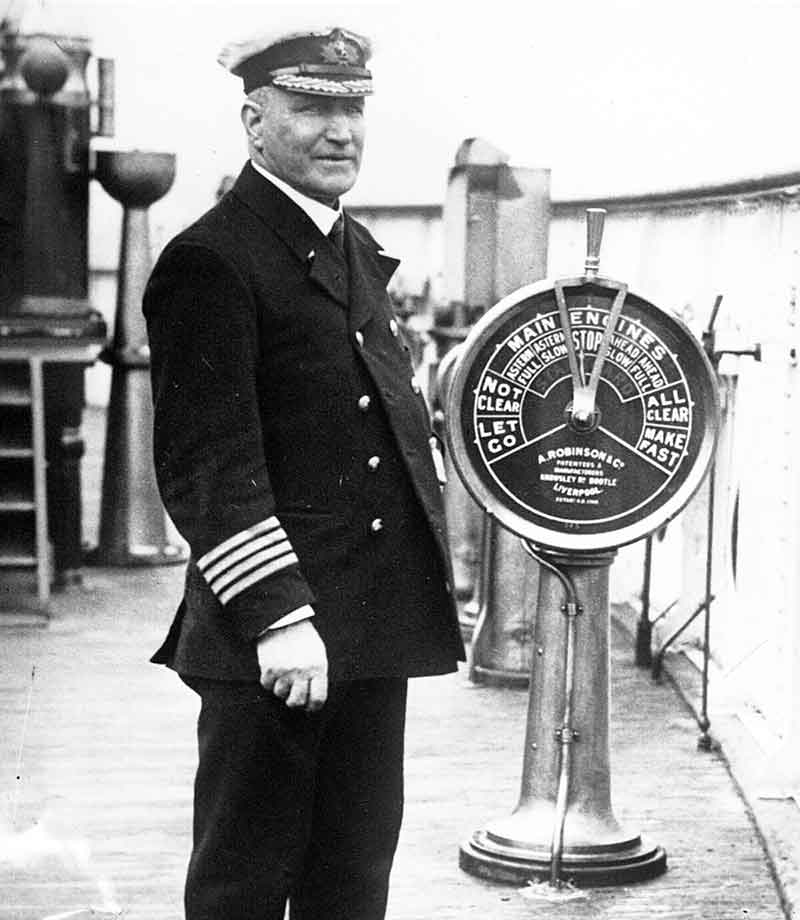
Turner could, nevertheless, guarantee that Lusitania was prepared for any potential issues. As the liner approached the hazardous area, he implemented double watches, instructed curtains to be closed at night across the ship, and had 22 lifeboats prepared and uncovered. On the evening of Thursday, May 6, Turner slowed down the speed of Lusitania after being informed about active U-boats near southern Ireland. This was done to ensure that the ship would pass Fastnet, the southernmost point of Ireland, during the night. On Friday, May 7, the passengers of the Lusitania got ready for the ship's arrival in Liverpool on a foggy and gray morning. The lunch that day was lively during the voyage, but the atmosphere on the bridge was subdued. HMS Juno did not meet the liner as planned, and Turner received another message alerting him to U-boat activity ahead. He changed direction to bring Lusitania closer to the shore. By 2 p.m., the ship was 27 kilometers (17 miles) from the Irish coast and 40 kilometers (25 miles) from Queenstown.
Turner unknowingly steered his course directly into the path of the German submarine U-20. Kapitänleutnant Walter Schwieger was in charge of a U-boat that left the German port of Emden a week ago. The mission was to locate and destroy British ships in the area from Dartmouth in the English Channel to the mouth of the Mersey River. Schwieger had achieved moderate success by sinking one sailing vessel and damaging a steamer. On May 7, by mid-day, he reached the Old Head of Kinsale. The fog that covered the area in the morning was starting to dissipate, and his lookouts were eagerly searching for any potential target. Shortly after 1 o'clock, they discovered one.
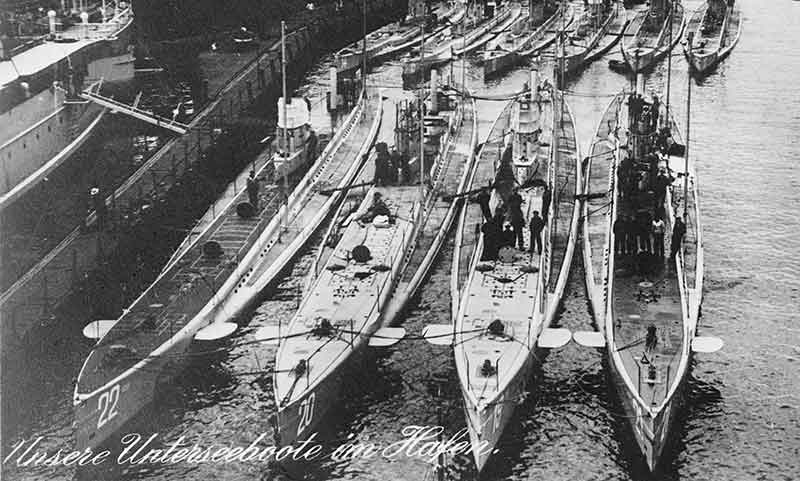
Schwieger instructed his lookouts to go below deck and immediately submerged U-20 to periscope depth. He quickly recognized the approaching ship as either the Lusitania or Mauretania, both of which he knew were designated as reserve armed auxiliaries. The submarine captain positioned the submarine within 700 meters (766 yards) of the liner, prepared to fire a G-type torpedo from one of the U-boat's four forward tubes, and launched the torpedo when conditions were optimal. After sixty seconds, the torpedo, moving at nearly 22 knots, struck the starboard side of the Lusitania just behind the bridge. Shortly after the first explosion, a significantly larger and more forceful detonation occurred, causing the ship to lose momentum and tilt to the right. Schwieger observed a "terrible panic" on the liner's decks through U-20's periscope.
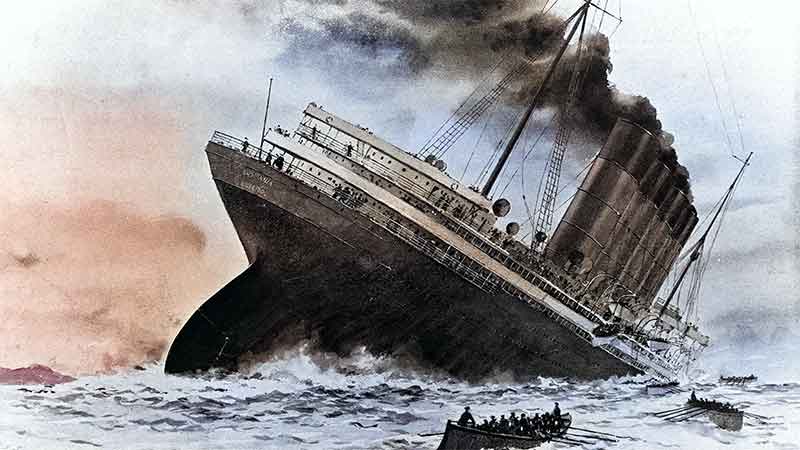
Although equipped with numerous watertight compartments, the Lusitania flooded rapidly. The ship's sharp angle to the right made it challenging to launch the lifeboats on the left side because they had moved inward towards the ship's side and could not be lifted clear of their hoists. As a result, numerous passengers were unable to escape from the quickly submerging ship. Lusitania sank within 18 minutes of being hit, leaving only floating debris and frightened survivors. Only 764 out of 1,959 passengers and crew survived despite the best efforts of rescue crafts.
Conclusions of Lusitania's Sinking
The destruction of the Lusitania caused outrage in the Allied nations, who viewed the attack as an unprovoked massacre of innocent people and a prime illustration of German brutality. Germany, in contrast, welcomed the news of the ship's destruction with joy. The German government argued that the Lusitania's classification as a reserve armed auxiliary ship justified targeting her and claimed that the high number of casualties resulted from the munitions on board rather than the U-20's torpedo.
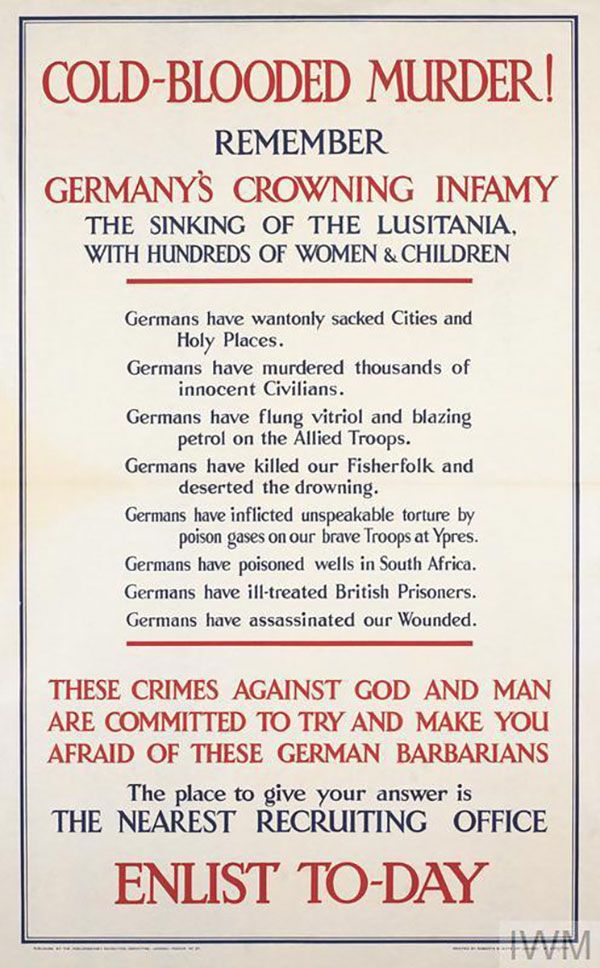
Ultimately, the contents of Lusitania did not determine her fate. She was the largest and most capable naval auxiliary the world had ever seen. Her capability made her a valid target, and when combined with the British government's choice to maintain a publicly announced naval auxiliary commercial service during wartime, it guaranteed that she would be targeted for attack. Whatever illegal goods the owners or government of that country might have been stupid enough to bring on board the Lusitania during her passenger runs only served to expedite her demise and guarantee the great loss of innocent lives.
The Lusitania was a valid military target, yet this does not excuse the German government or Schwieger and his crew. The sinking of a recognized passenger ship at sea was considered a war crime in the past and still is today. Germany's decision to implement unrestricted submarine warfare was a clear breach of moral principles and international law. Schwieger and his crew deliberately committed mass murder by firing a torpedo that resulted in the deaths of many innocent people aboard the Lusitania.
Last but not least, the sinking of the Lusitania taught us something equally significant about the military potential of passenger ships. The torpedo that sank the steamer confirmed that "superliners," despite their speed advantage, could be sunk if the attacker positioned themselves correctly. Also, the sinking served as an upsetting reminder of the passenger steamship's fundamental vulnerability to the effects of contemporary weaponry.
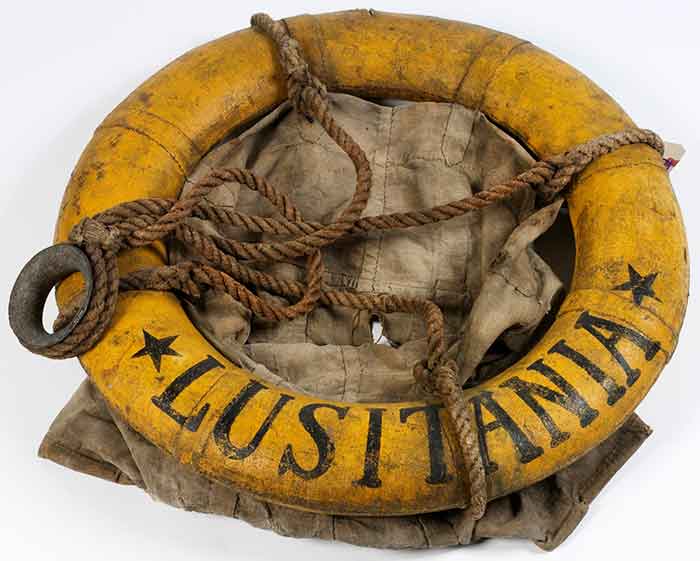
Inquiries and Speculations about Lusitania's Sinking
Although the commotion eventually subsided, it was never forgotten. In 1917, the Germans recommenced unrestricted U-boat warfare. The United States of America soon declared war on Germany.
Meanwhile, persistent inquiries emerged regarding the sinking that stayed unresolved. Notable among them was the subsequent and more significant explosion that occurred after the torpedo hit. Despite the fact that the Lusitania was already sinking, those on board assumed that the U-boat had fired a second torpedo. The Germans insisted that only one torpedo had been fired. They speculated that the second explosion was caused by explosives suspected to be on board the Lusitania. In the USA, numerous inquiries were being undertaken. Captain Turner of the Lusitania declined to discuss particular topics during the official inquiry, citing wartime confidentiality. This did not meet the Americans' expectations. They inquired:
- Why the Lusitania had reduced her speed, even though she was in a war zone.
- Why the Royal Navy had not sent a destroyer escort, even though destroyers were available.
- Why Lusitania was not warned that a U-boat was known to be in the area
- What exactly was on board the Lusitania.
Some Americans suspected that Britain was eager for the United States to join the war against Germany, which added to their unease. Not only German-Americans, but also others, believed that the British had exaggerated stories of German atrocities in Belgium and other places. There was a suspicion that the British were engaging in illicit activities yet again. Some argued that the British intentionally exposed Lusitania to danger, hoping that a significant number of American casualties would prompt the USA to enter the war.
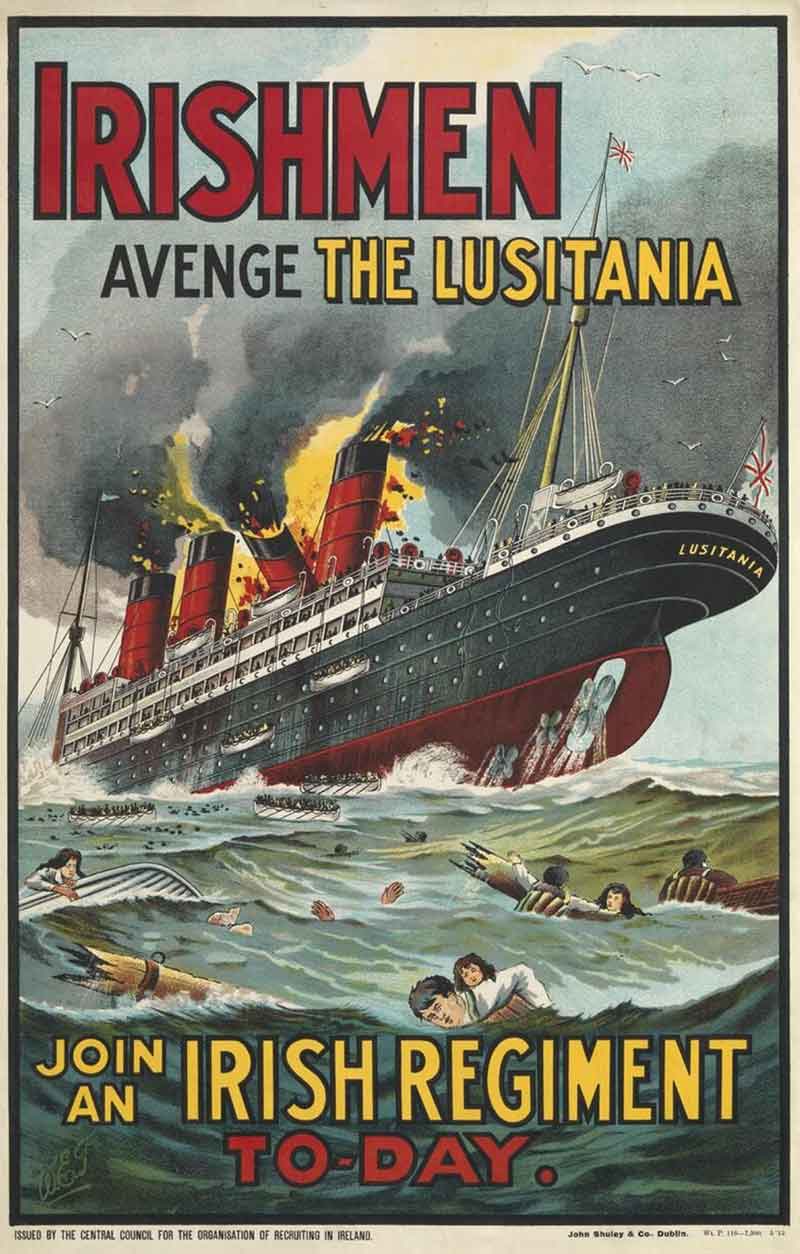
This accusation has persisted without disappearing completely. A journalist conducted an investigation in the 1990s and discovered that the signals sent between Lusitania and the navy 48 hours before the sinking were missing from the official files. They could not be found despite extensive searching.
Another concern that surfaced right after was the investigation into what had been on board. Passenger liners transported cargo in their lower compartments, and it was soon discovered that some of the cargo included rifle ammunition. A thorough examination of the cargo manifest revealed that a large American explosives factory had sent an extensive number of boxes labeled "fur" and "butter" to a Royal Navy base in Essex. There was an immediate suspicion that the boxes labeled fur and butter actually contained explosives. The boxes of butter were not stored in the refrigerated section of the hold, as they should have been if they actually contained butter. Both the American company and the Royal Navy adamantly declined to respond to any inquiries regarding the boxes.
Both of these issues were inadequately addressed when they occurred, but due to the extensive killings happening at that time, they were gradually ignored. In the early 1990s, advancements in diving equipment allowed divers to reach the wreck at a depth of 90 meters (300 feet), bringing both issues back into the public eye.
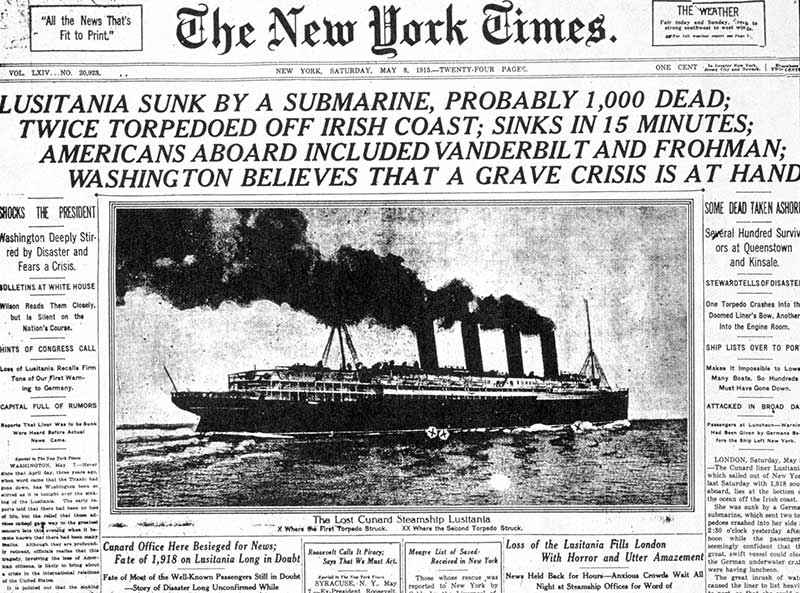
The initial divers who explored Lusitania discovered that the ship was in shambles. The hull, which was expected to be mostly undamaged, was actually fragmented. The damage was evidently a result of underwater explosions. Adjacent to the wreckage was a British naval depth charge, clearly indicating the cause of the damage. "There's no doubt at all that the Royal Navy and the British government have taken very considerable steps over the years to try to prevent whatever can be found out about the Lusitania," announced one expert after viewing photographs of the damage. The British government then filed legal action in Irish courts, claiming that the wreck belonged to the Royal Navy because Lusitania was an AMC when she sank. This would have ruled all object recovery illegal. After a two-year case, the judge ruled that the wreck did not belong to the Royal Navy because it was in Irish territorial waters; therefore, it belonged to the Irish Navy instead.
Inevitably, the British action fueled speculation that they had something to hide.
What that something could be, was never discovered.
- {{#owner}}
- {{#url}} {{#avatarSrc}}
{{name}} {{/url}} {{^url}} {{#avatar}} {{& avatar}} {{/avatar}} {{name}} {{/url}} - {{/owner}} {{#created}}
- {{created}} {{/created}}


